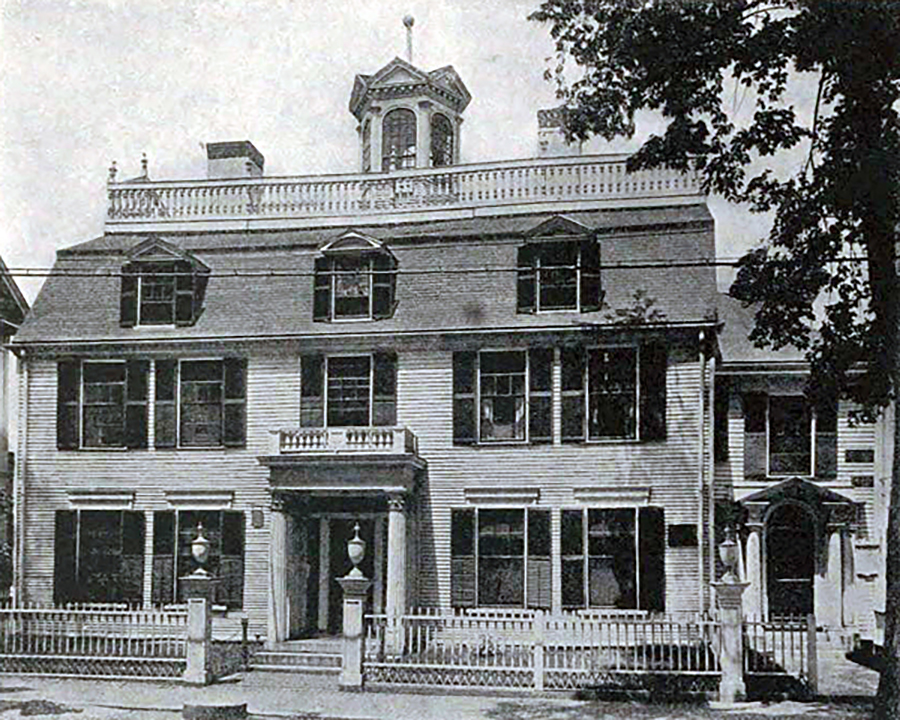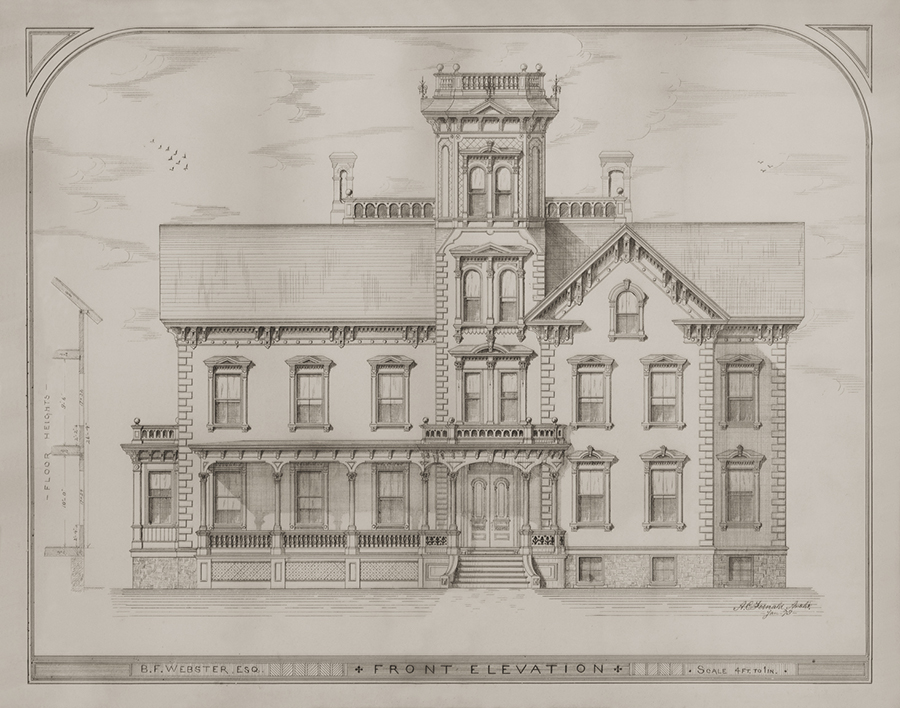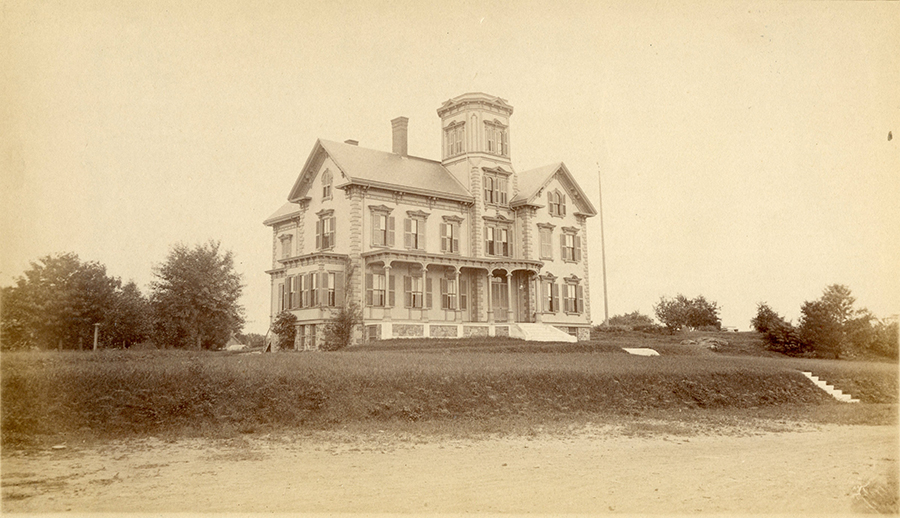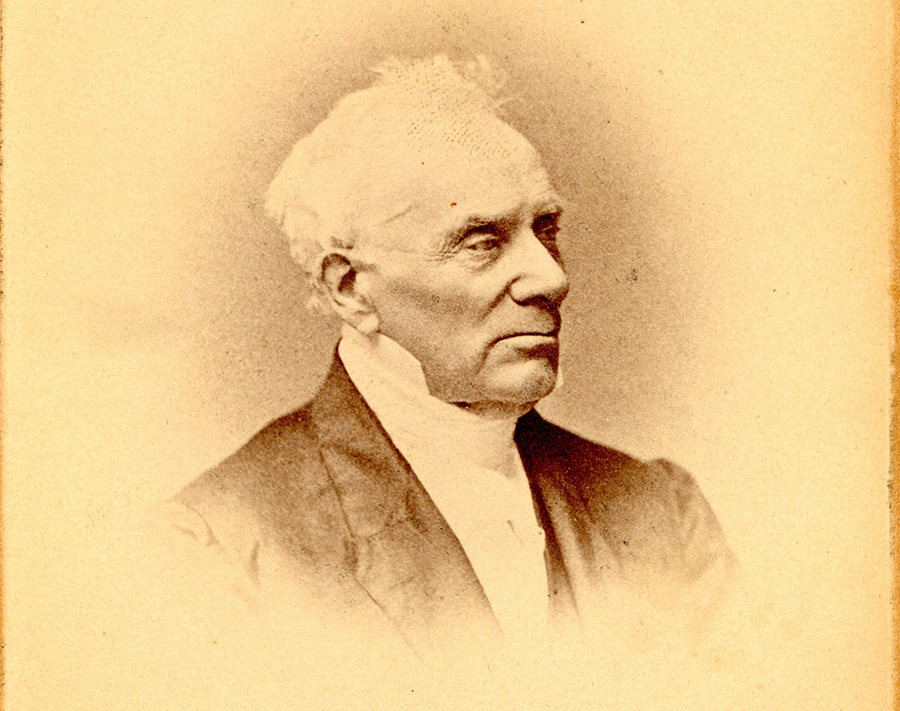History
History
J. Verne Wood Funeral Home has been serving Portsmouth area families for years. We are honored to be a part of the rich history of this community and plan to be a part of it for many years to come.

Buckminster House - The site of the original Buckminster Chapel
History of J. Verne Wood Funeral Home and the Ward Family
J. Verne Wood Funeral Home is the oldest mortuary in Portsmouth, having served the city and surrounding communities for over 150 years under the auspicious guidance of the Ward Family. We trace our roots back to the undertaking business led by J. Verne Wood, a former Police Commissioner, located in the original Buckminster Chapel located at 7 Islington Street. In the 1940s, Mr. Wood’s cousin, George Bradford Ward took over running the business. He acquired the Benjamin F. Webster House in 1953 and relocated the funeral home to its present location. In doing so, he renamed it J. Verne Wood Funeral Home while also keeping the name Buckminster Chapel as homage to the original location.
After the passing of George Bradford Ward on April 20th, 1973, Mr. Ward’s brother, Nelson Kellogg Ward and nephew, Fred Grant Ward, Jr. continued the family business. Eventually, Nelson decided to leave to pursue his career as a professional organist. This left Fred G. Ward, Jr. as the sole owner. Today, J. Verne Wood Funeral Home is run by Fred’s son-in-law, Thomas G. LaBerge, and daughter, Deborah LaBerge. Together, they maintain and expand a legacy of compassionate service four generations in the making.

Design drawings for the Benjamin F. Webster House

Benjamin F. Webster House at its completion
– Courtesy of the Portsmouth Athenæum –

A photograph of Benjamin F. Webster
– Courtesy of the Portsmouth Athenæum –
Brief History of Benjamin F. Webster and the Webster House
Benjamin F. Webster came to town as a pauper and left as a king. Born in Epsom, NH, on September 7, 1824 to Richard and Mary Webster, he moved to Portsmouth at the age of 17 to seek out his fortune. As an apprentice for Benjamin Norton, a local carpenter, he quickly became not only a master builder, but also ship joiner as well. At that time, many famous Clipper Ships were constructed on the banks of the Piscataqua River so young Benjamin had no shortage of work and commissions. On January 2, 1849, at the age of 24, he married the former Sarah A. Senter. They had two children, Merritt and Stella.
Webster’s career as a building contractor prospered. He formed a syndicate to rebuild the Congress Block that had been destroyed by fire on November 30, 1865. His projects include supervising the construction of the Kearsarge Hotel and the Cabot Street School, remodeling three churches, and building many of the notable Victorian residences of Portsmouth. At the time of his death, he was reputed to be one of Portsmouth's wealthiest men and largest property owners.
In addition to being a successful builder, Mr. Webster also left his mark on the Portsmouth community. He was a director of Portsmouth Machine Company, Portsmouth Trust and Guarantee Company, and numerous other firms. His Masonic career spanned over five decades starting in 1859. After membership in nearly every chapter in the area, he eventually served as Worshipful Master and Treasurer of St. John’s Lodge. They commissioned G. F. White of Boston to paint a portrait of Mr. Webster as a gesture of appreciation. The painting still hangs in the main hallway of Webster House today.
In 1878, Benjamin Webster reserved a choice piece of land bounded by Highland, Broad, and Merrimac Streets, set amid beautifully landscaped grounds located on a hilltop that was once known as "Rundlett's Mountain." This was to be the site of his future home and what a home it would become. A local draftsman, Albert C. Fernald, designed an ornate mansion fitting of a master builder and which, according to the Patch Collection, “epitomizes its own era as perfectly as the grand Georgian or Federal mansions of Portsmouth typified theirs.” Then, Mr. Webster went to work constructing the building himself. What eventually became known as Webster House was finished in 1880. It’s known as “one of the largest, handsomest, and best-built in the city”.
As was popular in the late nineteenth century in Portsmouth, the design of Webster House’s is a combination of the “Italianate” and Renaissance Revival” styles. The building’s main block is organized around a four story central tower, making it the tallest structure around. Stylistic features consist of quoins on corners, wide cornices and eaves, arched windows, and attic garbles. The inside was just as sumptuous with lavish use of walnut, mahogany, and gumwood. Before the Webster family moved in, a flight of 17 marble steps was added leading to the front entrance. All of these features are still preserved today.
Mr. Webster died on January 5, 1916 at the age of 91 after living a full and prosperous life. He was preceded in death by his wife Sarah on April 23, 1913. His daughter Stella continued to live in Webster House until she passed on February 21, 1952. The building was then sold to George Bradford Ward, who turned it into a funeral home by the name of J. Verne Wood Funeral Home.
As the current owners of Webster House, we are committed to preserving it in all of its glory. The Portsmouth Historical Society provides quarterly tours of the building. We also welcome anyone to come visit this historic place and learn more about Benjamin F. Webster and the beautiful legacy he left behind.
J. Verne Wood Funeral Home
Phone: (603) 436-1702
Fax: (603) 431-1841
84 Broad Street, Portsmouth, NH 03801
© J. Verne Wood Funeral Home
Crafted with care by Frazer Consultants and TA

